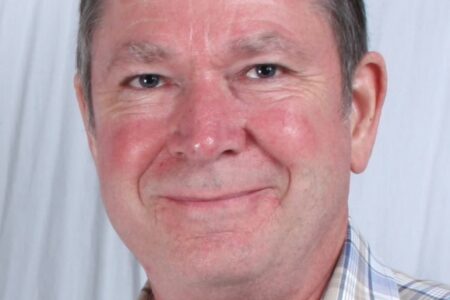COMMENT: The problem is the solution
The world’s in rough shape and it’s easy to feel overwhelmed. At the turn of the millennium, I stormed out of university in anger at a global system of economic injustice, environmental pillage, and—in North America at least—social impotence and apathy.
This attitude began to change when my tortuous path wound its way to a dew-laden forest on a Gulf island one winter. I hunted mushrooms and herbs in bare feet and contentment, hearing again the whispers of a deep, billion year wisdom in the woods, voices that had faded since childhood.
(And if you’ve ever gone mushrooming, you’ll know it’s not a harvest but a genuine hunt!)
I knew then that the right path is one of positive change and active self-improvement, not the negative doom-and-gloom that has come to dominate the counterculture of resistance. The associated senses of despair and helplessness are understandable in the face of monstrous inequity, greed, and global mismanagement, but ultimately these feelings are counterproductive.
Without discrediting their heartfelt service, many “activists” hope to change minds by spreading a barrage of information about our complicity in the slow death of the world. Much of this is true, and I usually sympathize with their protests. But people’s minds are not so easily changed, and most folks don’t take well to being told they’re wrong, blinded, or evil.
I decided that the only true activism involves thoughts and actions in which I actively take responsibility for myself and join cooperatively with others around me who—of their own volition—also want to change themselves and our community for the better. In my view, the best activists heed Ghandi’s (overused to the point of cliche) phrase: be the change you want to see in the world.
Around the same time I was prancing around the coastal woods with specimens of Hydnum repandum and other delicious edibles—certain in my belief that this species, in particular, had spoken to me directly, which it had—I was given Bill Mollison’s book, Permaculture: A Designer’s Manual. Although life took more twists and turns over the next decade, Mollison’s tome kept drawing me back with an irresistible gravity, a force that ultimately populated my library shelves with thousands of pages of humanity’s collective wisdom in a diversity of related fields.
Today I’m immersed in my second Permaculture Design Certificate course—a two-week intensive curriculum that covers the basics of the design method. This time I’m living with 20 other activists on the slopes above Nelson, and I can’t help but share my renewed enthusiasm. It’s been a dozen years since I first encountered “permaculture,” but I’m still giddy with excitement at its power.
What is permaculture?
The term was originally a contraction of “permanent” and “agriculture,” but now most of its practitioners recognize it as “permanent culture,” acknowledging the secondary role of agriculture to culture itself. It’s tough to sum permaculture up, but I’ll try this definition today: an ethical design science to regenerate ecological human habitat.
As a design science, it draws on disciplines as diverse as renewable energy and natural building; geology, hydrology, and soil science; animal husbandry, gardening, orcharding, and agroforestry; community economics, business, and sociology; landscaping, surveying, cartography; art, architecture, and much, much more. At it’s root, permaculture is based in an ethic of “care of Earth and care of people,” and also an ethic to take only what is enough or, put differently, to “share the surplus.”
I should note that no one kids themselves that there’s anything “permanent” about permaculture. The principles openly, perhaps ironically, embrace change and evolution as natural, important, and inevitable.
Among the foundational principles are such simple gems as “catch and store energy,” “use small and slow solutions,” and “use edges and value the marginal”—each very practical in a wide variety of circumstances—but my favourite may be this: “The problem is the solution.”
Finding solutions
I had a great teacher who loved to say, “It’s a paradox; therefore it’s true.” And so it is. Think of any problem we face, and think how—with a positive frame of mind—it can be turned into a solution instead. This is how we will think ourselves into a new and better world.
The mass media controls our narratives and focuses us on train wrecks and terrorism, leaving us powerless and afraid. So let’s take advantage of these new connective technologies, and control what we read and watch. Let’s weave our own media to tell our own stories imbued with relevance, meaning, and potential for personal improvement.
The mountains of waste pile higher and deeper, but nature is only wasteful when the parts are split, the connections separated. Sure as shit, a mountain goat’s feces feed an alpine meadow while ours is flushed out to sea. Every waste is a resource, every pollutant an opportunity—a business opportunity, even, with potential to profit—if we choose to see it as such.
Most fundamentally, we have a problem with food and shelter—excessive for some, but terrible for most. Obscenely-moneyed interests want to control these basic needs to reap profits well beyond their needs.
In North America, we need not submit to their vision of a mollified suburban workforce where blue and white collar slaves eat nutrient-poor “food” from factories and factory farms, and bust ass all day in unfulfilling work to make the mortgage payments on oversized, inefficient houses.
Instead, let’s turn this consumerism into producerism. We’ll find the path is far from sacrificial, but profitable in connections with our communities, our earth, and ourselves. The forefathers of the United States understood it was the “pursuit of happiness” that drives us, not the pursuit of elusive and illusory wealth. And happiness is found in small and simple ways, each one a connection with one another and our planet.
Even as the global population approaches ten digits, there’s still plenty of sunlight hitting the earth to power plants to feed all of us, and our animals, and what’s left of “wild nature” too. There’s still rain in the sky, and many ways to turn back the rising desert tide. Forests of food can grow to feed people at five or ten times what our industrially farmed fields can, and with a fraction of the energy inputs.
The methods are proven, we just need more people to implement them.
We can regenerate our soils and our communities. It’s as simple as taking one step forward, out of the box, and then another, with each other, sharing and caring all they way.
Naysayers bring us all down
And whatever you do, don’t look back at the spin doctors’ myths: organic methods will never feed the world; renewable energy can’t power the world; we need three per cent growth for a healthy economy; “that’s just the way it is.”
We had the pleasure of a full day on Wednesday with the famous sustainable forester, Herb Hammond. At 68, he has a sparkle in his eye and he brims over with knowledge of ecological systems, indigenous cultures, industry, and science. This man has been all over Canada and around the world, helping people see forests—really see them—for all their richness and their potential to serve all our needs indefinitely.
He told us, “We haven’t done a very good stewardship job on this planet. We need to learn from natural systems, not only what they can provide for us, but also what they can restore back into human-dominated systems.”
“In trying to do the things that you might do in your lives, from what I heard you say [in your introductions], it’s not a conventional path, and there will be lots of challenges for you. Lots of people will tell you that you can’t do it, that you’re crazy, or that it’s not economical, or things like that,” he continued.
“Well, I’ve been doing those crazy things for 35 years, and you know what? It works. We can have a lot more humane society, and society would be a lot happier if we would pay attention to some of those ideas. I encourage you to keep those dreams alive.”
Shake off that depression, there’s work to do!
Many people are in the doldrums, the post-modern blahs, the rat race ruins, and they’re wondering what it all means. I’m no theologian, but if I were to hazard a guess, most of the meaning in life is wrapped up in relationships with each other and relationships with the earth—and sure, our relationship with the forces beyond our comprehension that have made it all so.
The meaning is found in making, in building, in growing, and in doing all the creative work of living. We have tried to escape this mundane work. We were seduced by the 1950s dreams of robot maids and do-it-all gadgets, but we know better now. The myth that we’d all work less was already laughable long ago. We work just as hard, but now—for most people—the work has far less meaning and very little joy.
We can find the meaning again, and we’ll find it doing good work together with good people for good reasons.























Comments